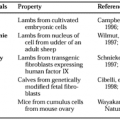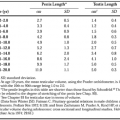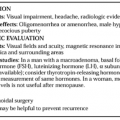TREATMENT OF HYPERCALCEMIA
Principles of therapy for hypercalcemia should be based on an understanding of its cause, knowledge of its pathophysiology, and careful assessment of the symptom complex in individual patients. The treatment of mild hypercalcemia in a patient with asymptomatic primary hyperparathyroidism (i.e., without nephrolithiasis or apparent skeletal disease) is controversial (see Chap. 58). Similarly, mild hypercalcemia associated with thyrotoxicosis requires no treatment because it resolves spontaneously with treatment of the hyperthyroidism. The hypercalcemia in patients with familial hypocalciuric hypercalcemia almost always is asymptomatic and requires no therapy. Some may argue that severe hypercalcemia in a comatose patient with terminal cancer is best left untreated.
The treatment of hypercalcemia in a patient with significant symptomatology may be an urgent problem. The severity of symptoms of hypercalcemia can be related to the absolute calcium concentration; the rate of development of hypercalcemia (the faster the increase, the greater the symptoms); and the duration of the hypercalcemia. These points, as well as the patient’s overall status and prognosis, should be considered before commencing therapy.
Therapy is best determined with an understanding of the pathophysiology of a given patient’s hypercalcemia. For example, the absorptive hypercalcemia of sarcoidosis is best treated with dietary calcium restriction, whereas the resorptive hypercalcemia of immobilization and malignancy is most appropriately treated with measures aimed at diminishing osteoclastic activity.
Specific treatment of most of the disorders listed in Table 59-1 is self-evident. Therapy for the hypercalcemia associated with primary hyperparathyroidism, renal osteodystrophy, and neonatal disorders is discussed in Chapter 58, Chapter 61 and Chapter 70, respectively. Treatment of the underlying disorder responsible for hypercalcemia is an obvious, but frequently overlooked, goal, particularly in patients with malignancy-associated hypercalcemia. In these patients, antitumor therapy should be planned and initiated early in the hospital course, because other measures are effective only transiently and may be associated with toxicity. Usually, long-term control of malignancy-associated hypercalcemia can be accomplished only by successful antitumor therapy.
SALINE INFUSION
Renal calcium excretion is enhanced by saline infusion, because of both the increase in glomerular filtration rate and the role of the filtered load of sodium in blocking proximal tubular calcium reabsorption.90 The rate of infusion should be adjusted to the clinical situation. The uncertain cardiovascular status of these patients, many of whom are elderly, dictates caution. Infusion rates of 200 to 400 mL per hour of 0.9% saline are commonly used. The status of hydration should be checked frequently by physical signs (rales, skin turgor, mucous membrane hydration, blood pressure) and by hemodynamic monitoring when appropriate. Aggressive saline infusion may lead to hypokalemia, hypophosphatemia, and hypomagnesemia. These ions should be measured and replaced as necessary.
LOOP DIURETICS
Loop diuretics appear to inhibit calcium reabsorption at the level of the thick ascending limb of the Henle loop.90 In theory, use of agents such as furosemide should enhance the calciuresis of a saline infusion. Furosemide in dosages of 40 mg or more,
given intravenously or orally, is widely used for this purpose. This drug should not be administered to dehydrated patients until rehydration is complete, because it may further reduce the glomerular filtration rate and, thereby, reduce the filtered load of calcium, decreasing renal calcium clearance even more. The drug is particularly useful if the patient has coexistent congestive heart failure. Again, careful surveillance of a patient’s fluid, electrolyte, and renal status during therapy is critical.
given intravenously or orally, is widely used for this purpose. This drug should not be administered to dehydrated patients until rehydration is complete, because it may further reduce the glomerular filtration rate and, thereby, reduce the filtered load of calcium, decreasing renal calcium clearance even more. The drug is particularly useful if the patient has coexistent congestive heart failure. Again, careful surveillance of a patient’s fluid, electrolyte, and renal status during therapy is critical.
RESTRICTION OF CALCIUM AND VITAMIN D INTAKE
Dietary calcium and vitamin D restriction and avoidance of exposure to sunlight and other ultraviolet light sources is appropriate in patients with absorptive causes of hypercalcemia, such as sarcoidosis and other granulomatous diseases during their active stages.90 Dietary calcium intake should be kept at <400 mg per day, the use of vitamin D supplements should be discontinued, and the patient should be advised to limit sun exposure as much as possible. These same guidelines probably apply to the occasional patient with 1,25(OH)2D-mediated hypercalcemia associated with lymphoma.32,33 and 34 Similarly, vitamin D intoxication and the milk-alkali syndrome should be treated with dietary calcium restriction.
Conversely, dietary calcium intake should not be reduced in patients with primarily resorptive, that is, malignancy-associated, hypercalcemia. Plasma 1,25(OH)2D values are reduced in these patients, and dietary calcium absorption is inefficient. Unpalatable calcium-restricted diets are unnecessary and may further the nutritional deterioration and general misery of these patients.
CALCITONIN
Most causes of acute hypercalcemia requiring aggressive treatment are related to accelerated bone resorption. Therefore, agents that inhibit osteoclastic function are important aspects of therapy. Bone resorption in vivo and in vitro can be inhibited by calcitonin. Calcitonin use has been disappointing in treating moderate to severe hypercalcemia because it does not work in all patients. The decrease in serum calcium is generally small, and most patients escape from the osteoclast-inhibiting effects of calcitonin in several days. Furthermore, the treatment is extremely expensive.90,91 Nevertheless, given its low incidence of side effects and the rapidity with which the serum calcium level falls after administration of the hormone (2 to 4 hours), it is useful in some clinical settings. The dosage of salmon calcitonin suggested by the manufacturer is 4 IU/kg every 12 hours given subcutaneously or intramuscularly. Patients should undergo skin testing for hypersensitivity before use, as described in the package insert. Although interest has been shown in, and an argument made for, the synergistic effects of calcitonin and glucocorticoids, evidence supporting the efficacy of a combined regimen is not compelling (see Chap. 53).
Stay updated, free articles. Join our Telegram channel

Full access? Get Clinical Tree






